Antonie van Leeuwenhoek Biography
Antonie van Leeuwenhoek was a Dutch scientist, naturalist, businessman and microscopist. Antonie Van Leeuwenhoek discovered small creatures such as bacteria, protozoa, parasitic and free-living protists, blood cells, sperm cells, rotifers, nematodes, hydra and volvox by his own handcrafted microscope.
Leeuwenhoek’s father Antonisz Van Leeuwenhoek was a basket maker and his maternal family was connected with the business of brewers. Antonie’s father died when he was only five years old.
After the death of his father, Antonie’s mother remarried Jacob Jansz Molijn, a painter by profession. His step-father died when he was only ten years old.

On 29 July 1654, Antonie married Barbara de Mey a draper’s daughter from Norwich England. In 1666, his wife died and had five children.
On 25 January 1671, Leeuwenhoek remarried and his wife was the daughter of a Calvinist minister and she died in 1694.
Leeuwenhoek had four sisters Magriet, Neeltje, Geertruyt, and Catherina from his first father.
Antonie Van Leeuwenhoek was born in Delft, Netherland on October 24, 1632. He was a scientist and known as the Father Of Microbiology. He was also a well-known businessman and microscopist created approximately 500 handicraft microscopes.
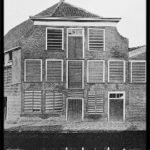
Van Leeuwenhoek’s research on small creatures like bacteria, protozoa, and spermatozoa invalidated the theory or doctrine of spontaneous generation.
After the improvement of the magnification power of the handcrafted microscope, Antonie was the pioneer to observe and describe the nature of unicellular microscopic organisms and these single-cell creatures were referred to as “animalcules” means (tiny animals).
His observation of microorganisms was helpful for science to make the vast branches like bacteriology and Parazoology.
Antonie served their whole life in Delft and he was baptized. He was only five years old his father died and his mother remarried a painter Jansz Molijn but he lost his second father when he was only ten years old.
He sent to the grammar school of Warmond which was situated in the village near Leiden. Antonie leaves the school and sent to live in Benthuizen to his uncle which was a lawyer.
After a short period to stay there, he went to Amsterdam in the year of 1648. He became an apprentice at a textile draper’s shop in Amsterdam when Leeuwenhoek was only sixteen years old.
After six years he went back to Delft to open the shop and start their own business of textile.
Van Leeuwenhoek was a popular cloth merchant and haberdasher in Delft then he decided to join the municipal politics. In 1660, he started a new career as a civil servant and allocated as an usher to the aldermen of the municipal committee of Delft.
After that, In the period of 1660, he was appointed as a wine gauger and land surveyor to the court of Holland. Antonie was financially secure due to their official income. He was lucky because the municipality granted him a pension to fulfill their scientific achievements in those ages.
Antonie van Leeuwenhoek was a famous businessman in Delft. When he returned from Amsterdam, he opened his own textile and haberdasher shop in Delft. There was a golden time to implement their experiences which were learned from Amsterdam.
Van Leeuwenhoek was a well-known microscopes. He saw the first microscope on the linen-draper shop which was so simple with simple magnifying lenses.
In those days there was an appropriate method for textile merchants to inspect the quality of threads. Antonie was not satisfied because the magnification power of this microscope was not so well when he decided to make a handcrafted microscope with highly magnification power.
When Leeuwenhoek came back to Delft to open their own shop of the textile then he promotes their interest to make his own self-made microscope.
After a short period, he made approximately five hundred different microscopes with a different worth of magnification. Antonie played a significant role in the discoveries of a minute biological creature.

Leeuwenhoek was an efficient scientist but unlucky about their higher education because he belonged to the family of tradesman. Due to their lack of scientific education, this task was hard to make logical scientific conclusions because it is important to obligate scientific rules when someone introduces their scientific work.
Leeuwenhoek’s concepts about their discoveries were carefully observed and documented. Antonie’s scientific career started earlier when he identified the nature of single-celled microorganisms.
After the formation of the well-magnified microscope he studied and examined the bacteria, protozoa, blood cells and other microscopic organisms that cannot be seen with the naked eye.

In 1676, Leeuwenhoek discovered and observed bacteria in pond and rainwater.In1683, he also observed Selenomonads from the oral part of humans and estimated that more than 10,000 bacteria can fill the tiny grain of sand.

In 1674, Antonie studied the shape and size of red blood cells.He determined the accurate size of cells with his magnifying lens.Leeuwenhoek also examined that the living organisms are composed of eighty percent (80%) water.
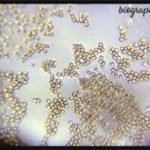
In 1677, Van Leeuwenhoek studied the male gametes. He discovered the spermatozoa in amphibians, insects, humans, arthropods, mollusks, fishes, birds, and mammals. He concluded that the fertilization occurs when sperm entered or penetrate in the female egg.

In 1683, Antonie dissects the insects and discovered lymphatic capillaries that have white colorless fluid containing white blood cells.
Van Leeuwenhoek identified the structure of root, leaf, and stem and also examined that the plant’s tissues are composed of complex mesh-like structures made up of globules but his description about plant function is unclear because he was not totally understood and about their functions.
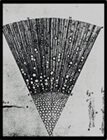
Van Leeuwenhoek refuted the doctrine of anomalous or spontaneous generation. When he observed the life cycle of fleas and maggots then he described that these organisms do not spontaneously produce then he described the life cycle of insects and the process of reproduction.
He discovered parthenogenesis in aphids by dissecting their body part and also described the life histories of different animals like a flea, weevil and an ant.
Antonie observed the structure of muscle fibers and confirmed their work by William Harvey’s by perceiving the blood flow in capillaries.
111
Van Leeuwenhoek observed Giardia, Sheep liver fluke and other parasites by using their own microscope.
He found minute organisms when he examined their own stool during the time of diarrhea and he studied their helical movement of microorganisms. Antonie’s discovery of parasites paved the path to advanced parasitology.
He studied plaque formation in the oral cavity by probe his own teeth. When Antonie was studied about nematodes and rotifers then he observed that microorganisms may propagate by air, water, and wind to initiate the process of fertilization.
Antonie Van Leeuwenhoek Microscope
Antonie Leeuwenhoek was a microscopist. He was not the inventor of the microscope but prominent to improve the magnification power of the microscope.
He ground more than five hundred small lenses and made approximately five hundred microscopes and the lens was made up of a small rod of soda-lime glass.
The sphere of the lens was small but the highest magnification power and the frame of the microscope were made of silver and brass.
The range of magnification was 50X to 300X but some lenses magnification have more than four hundred times and the magnification power of the compound microscope was only 20X to 30X which was invented before the birth of Van Leeuwenhoek.
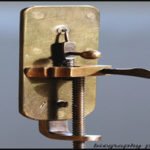
The cadre of Leeuwenhoek microscope was made by brass with a small hole on the upper side of the plate to adjust the lens. The pin and three screws which move the sample and pin to adjust their focus point.
This instrument was smaller than a compound microscope and only three to six inches long. The sample mounted on the pin and screw to move the pin for clearly focus the specimen.
The illumination and eye closure of the lens was important to examine the sample which was mounted on the pin. Through this self-made microscope, Van Leeuwenhoek discovered the small unicellular organisms and trace the new world of the tiny creature.
Antonie Leeuwenhoek considered as the “Father of Microbiology”.He discovered small unicellular organisms by his own self-made microscope.
His discoveries are so vast and some notable are bacteria, parasitic microscopic protists, sperm cells, nematodes, rotifers and many other biological organisms.
Antonie traced the path of advancement in the field of parasitology, protozoology, and bacteriology.
He was well known and efficient in their field and credit of prosperity in the fields of microbiology goes to Antonie van leeuwenhoek.No doubt he was a great scientist and the father of microbiology.
Antonie van Leeuwenhoek and Cell Theory:
In cell theory it is stated that the living organisms are made up of cell and cell is the basic unit of structure, function, and reproduction in all living organisms.
Robert Hook discovered the first cell from a compound microscope. He believed that cells are not alive with no nucleus and organelles.
He described a cell in his book Micrographia but Hook was not totally understood about the nature of cell and the theory of spontaneous generation still accepted at that time until before the work of Leeuwenhoek.
Van Leeuwenhoek described the nature of the cell by his own microscope which was highly magnification power than the Hook’s compound microscope.
WhenLeeuwenhoek saw small organisms under the microscope he discovered that the cells are alive and motile. He wrote many letters to the royal society and elaborate about the nature of microorganisms.
In one letter he states that the quality of life is nothing without motility and all living cells are motile. He was first to provide knowledge about bacteria, protozoa and the process of fertilization.
Van Leeuwenhoek rejected the doctrine of spontaneous generation and he is the main pillar of the edifice of cell theory.
The primitive Greek doctrine of spontaneous generation was rejected by the contribution of different scientists. Francesco Redi and Van Leeuwenhoek are prominent to refute the theory of spontaneous generation but Redi’s experimental work has not a solid argument to reject the idea of abiogenesis.
He described that living organisms like maggots and fleas are born from other living organisms but he was disabled to prove that the eggs of flies turned into maggots.
Leeuwenhoek a pioneer who discovered the cell and other unicellular organisms and supported the postulate of cell theory.
He proved that the cells of the living organisms are come from pre-existing cells and cannot be spontaneously produced by nature. This doctrine of abiogenesis was rejected after the Leeuwenhoek cell discovery.
Robert Hook and Van Leeuwenhoek are eminent scientists of the seventeen century. They refined the work of science and contribute to science to paved the path of human prosperity.
Robert Hook published their book ”Micrographia” in 1683 and in this book he described the cell which was examined by a compound microscope with small magnification power approximately 20X TO 30x. He described that the cell is like a hexagonal room and not alive.
Robert also examined the cell wall of the plant but Leeuwenhoek was an efficient scientist to studied the unicellular microorganisms which cannot be seen by the naked eye.
He examined that the cell is alive and organisms are not spontaneously produced.van Leeuwenhoek improved and refined the work of Robert Hook.
Van Leeuwenhoek was not satisfied to publicize their work in the Royal Society. His friend Dutch physician Regnier de Graaf insist Leeuwenhoek introduce his work on the microscope in Royal Society.
He wrote a letter to the society about the microscopic observation of bees, lice, and mold. In 1673, the society publishes this letter in the journal Philosophical Transaction of Royal Society by the contribution of Henry Oldenburg who was the editor of a journal.
Henry Oldenburg learned Dutch for this purpose to translate letters into Latin and English.Antonie’s work on bee mouthpart and sting was published in 1673 and he never went to the Royal Society to attend the meeting of the society.
He was introduced to the Royal Society by his friends and initially, he introduced his own scientific work to his friends.

In 1667, Antonie Leeuwenhoek sent a copy of his observation on the unicellular microscopic organisms in the Royal Society then the reliability was questioned in the society because he was not well educated.
After that, the work of Leeuwenhoek confirmed by the members of the Royal Society and acknowledged by society. In February 1680, he was elected to a member of the royal society in London and recognized as a scientist.
He worked alone in Delft and never attended the ceremony or meeting of the society. Robert Hook, Henry Oldenburg, Robert Boyle and Christopher Wren were contemporaries of Van Leeuwenhoek and the members of the Royal Society.
He wrote many scientific letters to the society and other institutions approximately Antonie wrote five hundred letters over a period of 50 years to introduce their work in the world of science.
Antonie van Leeuwenhoek Death
In his last few months, Leeuwenhoek suffered from a disease and described his own rare disease in his letters to the Royal Society.
In this disease, the movement of midriff is not eased to control and this disease is now named Van Leeuwenhoek disease. Leeuwenhoek died on 26 August 1723 at the age of 90 and buried in the old church of Delft.
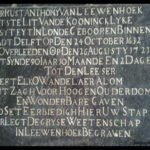
Timeline of Antonie Van Leeuwenhoek
October 24 , 1632 Antonie van Leeuwenhoek born in Delft
May 17 , 1638 Antonie biological father died when he was only five years old
1643 Leeuwenhoek second father died
JUNE 18 ,1648 Antonie migrate from Delft to Amsterdam
March 21 , 1654 He returned to Delft and established his own textile business
July 29 , 1654 Antonie married Barbara de Mey
January 3 , 1666 His first wife died
August 16 ,1668 He learned to grind microscopic lenses
May 17 , 1671 Antonie remarried Cornelia Swalmius
March 17 , 1673 His observation published in Royal Society
September 7 , 1674 He was pioneer to see and examine the single cellular bacteria
1674 Antonie also examined the red blood cells and discovered protists
1676 He discovered the bacteria genus (Selenomonas)
April 10, 1680 He recognized as a member of Royal Society
1683 Van Leeuwenhoek discovered lymphatic capillaries
1683 Van Leeuwenhoek observed plaque formation in the human oral cavity
October 28 , 1698 Demonstrate the blood circulation
August 26 , 1723 Leeuwenhoek died in Delft
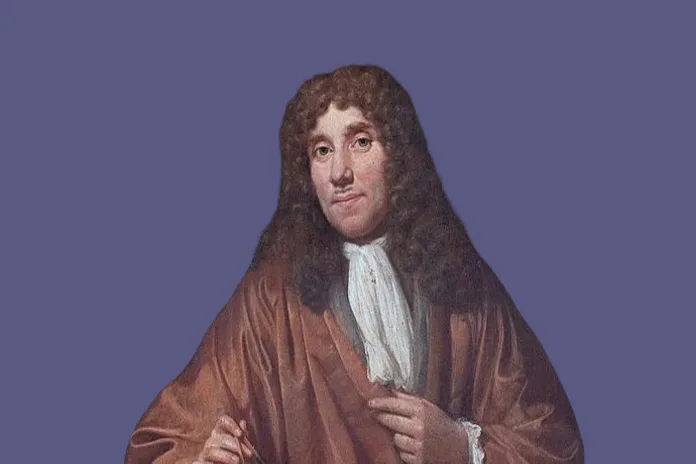
Everything is very open and very clear explanation of issues. was truly information. Your website is very useful. Thanks for sharing.
I like what you guys are up also. Such smart work and reporting! Carry on the superb works guys I¦ve incorporated you guys to my blogroll. I think it will improve the value of my web site 🙂
Very interesting subject , regards for posting.
Some truly nice and utilitarian information on this website, too I believe the style has great features.
Hey There. I found your blog using msn. This is a really
well written article. I will be sure to bookmark it and come back
to read more of your useful info. Thanks for
the post. I will certainly comeback.
Also visit my website … nordvpn coupons inspiresensation
This website was… how do you say it? Relevant!!
Finally I have found something that helped me. Appreciate it!
Here is my blog – nordvpn coupons inspiresensation
Thanks for another informative website. The place else could I get that kind of info written in such an ideal means?
I’ve a undertaking that I’m simply now running on, and I’ve been at the look out for such information.
Here is my blog – nordvpn coupons inspiresensation
Fine way of explaining, and fastidious piece of writing to take data about my presentation focus,
which i am going to present in institution of higher education.
Visit my blog post; nordvpn coupons inspiresensation (shorter.me)
I have recently started a blog, the info you offer on this site has helped me greatly. Thanks for all of your time & work.
350fairfax nordvpn discount
I visited multiple sites however the audio feature for
audio songs present at this site is actually excellent.
amei este site. Pra saber mais detalhes acesse o site e descubra mais. Todas as informações contidas são conteúdos relevantes e únicos. Tudo que você precisa saber está está lá.
Great post. I was checking constantly this weblog and I am impressed! Extremely helpful info specifically the ultimate part 🙂 I care for such information a lot. I was seeking this particular info for a long time. Thanks and good luck.
Hi there to every one, it’s in fact a nice for me to
visit this website, it contains useful Information.
Here is my page … vpn (tinyurl.com)
I like this blog very much, Its a really nice position to read and receive info . “Reason is not measured by size or height, but by principle.” by Epictetus.
I envy your piece of work, appreciate it for all the great blog posts.
I believe what you typed was actually very reasonable.
But, what about this? suppose you were to write a awesome headline?
I mean, I don’t wish to tell you how to run your website, however suppose you added something that grabbed a person’s attention? I mean Antonie van Leeuwenhoek – A comprehensive biography is
kinda boring. You could peek at Yahoo’s home page and note how they
create article titles to get people interested.
You might add a related video or a picture or two to grab people interested about everything’ve written. Just my opinion, it would make your posts a
little livelier.
Also visit my page … vpn